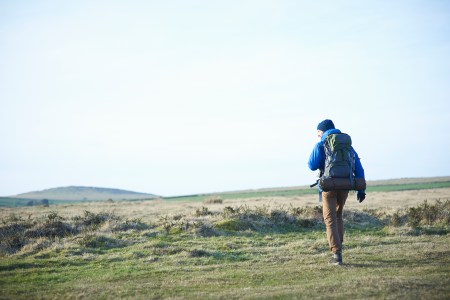Bloomberg recently profiled a hyper-wealthy, 45-year-old software entrepreneur named Bryan Johnson, who spends $2 million on his body annually in an quest to restore “the brain, heart, lungs, liver, kidneys, tendons, teeth, skin, hair, bladder, penis and rectum of an 18-year-old.”
Yeah. Johnson represents the final boss of today’s longevity movement — a man so committed to reversing aging, he approaches it like a full-time job. He doesn’t just wake up at 5 a.m. every day to take 24 supplements and medicines, draw blood and electrostimulate his pelvis. Johnson’s also on the vanguard of epigenetic research in the realm of cell reversal procedures.
He’s a guinea pig, basically. And while his biomarkers would suggest he’s “getting younger” (Johnson evidently ages at a 0.76 rate compared to a normal adult…he likes to say that his October, November and December are now “free”), nothing about this seems easy, or intuitive, or desirable, or affordable — unless you sold a company for $800 million in the 2010s.
Despite these preposterous portrayals, though, or accounts of gonzo biohacks (intermittent fasting, ice baths, etc.), aging gracefully doesn’t have to be quite so hard. In a book called The Swedish Art of Aging Exuberantly: Life Wisdom from Someone Who Will (Probably) Die Before You, Margareta Magnusson makes the case for a gentler, relationship-oriented approach to growing old.
What to Do If You Still Haven’t Started Exercising This Year
There’s a type of activity that protects the brain better than othersThe 86-year-old was an artist for decades, and has since transitioned into an unexpected era of self-help success. Her last book, The Gentle Art of Swedish Death Cleaning, was an international bestseller. (Think: morbid Marie Kondo’ing.) Decluttering is still a big theme in her latest offering, along with a few other kernels of widsom:
Get to know kärt besvär
Magnusson says: “The secrets of aging well and happily are in finding ways to make your routines dear to you…As one ages, it seems more and more that everything becomes a kärt besvär.” Those unfamiliar words translate to “cherished” and “pain.” An unlikely combo, but one very truthful to life — there are things we must do, day in and month out, that we simply can’t get around. (Commuting, cleaning the house, calling a relative who likes to complain.) You could rue these things, or you could choose to embrace them…finding nuance in your nuisances.
The youths
To Magnusson, spending time with young people is the pinnacle of happiness. She has an all-time quote on the topic: “Just ask them questions. Listen to them. Give them food. Don’t tell them about your bad knee again.” In exchange for a reprieve from knee-chat, young people offer humor, energy, perspective, patience, advice, tutorials on technology…you name it. They’re an invaluable link to a planet that remains spinning — the one you’re still on, the one that’s still worth exploring and considering, no matter how much it may feel like your time has passed.
“Yes, man” mentality
Saying “yes” to things doesn’t have to mean crossing bullets off a bucket-list, like jumping out of a plane or learning a foreign language. (Though it certainly could!) It means making a habit of interrogating your comfort zone, and actively seeking ways to expand it…especially as you age. Close-mindedness can reinforce other negative thought patterns, heightening one’s sense of anxiety and isolation. But making a point of putting yourself out there, even when you don’t really feel like it, will pay dividends. And to be clear, this doesn’t just mean signing up for a class or showing up to a dinner party. Magnusson’s example: buying herself a leather jacket.
Thanks for reading InsideHook. Sign up for our daily newsletter and be in the know.


















